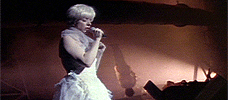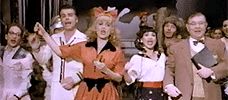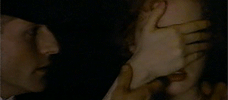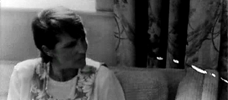Reviews
David Lynch
France, 1995
Credits
Review by Leo Goldsmith
Posted on 15 July 2010
Source Absurda DVD
External links
Watch the film on Google Video
Categories David Lynch’s 1990s
On the occasion of cinema’s centenary, the 1995 Lumière & Co. project presented an assignment to 41 filmmakers from around the world: to create fifty-two seconds of film with an original cinematograph manufactured by the Lumière Brothers’ under roughly the same conditions as the early filmmakers: without the use of synchronized sound or editing equipment, and with only the small amount of film made available to them. Never mind that the cinematograph was actually patented, not invented, by the Lumières in 1895, having been invented three years prior by Léon Bouly, who was too poor to pay for the patent. This was a grand international project with much the same PR glint as the contemporaneous Dogme 95 movement - albeit more grandfatherly, nostalgic, and French - with filmmakers ranging from Theo Angelopoulos to Zhang Yimou, and contributions alternately festive (Rivette) and forgettable (Wenders).
Amongst these, David Lynch’s contribution, the brief and blistering Premonitions Following an Evil Deed, is easily the most elaborate, and perhaps the only that endeavors to be deeply unsettling. In less than a minute and exactly five shots, Lynch manages to collapse almost an entire oeuvre’s worth of perversions and predilections into his short contribution: a discarded female corpse is found by police in the dust; a lonely housewife recoils with an undefined prescience for evil (shades of the concerned parents in Blue Velvet, Twin Peaks, and Lost Highway); a pair of nymphettes and what appears to be a live deer wander in an over-exposed dreamland boudoir; hulking, evil variations on Eraserhead’s Man in the Planet (or the titular Six Men Getting Sick of his first film) operate a steaming sex-torture factory; and finally, with an explosion of sparks and flame, the scene returns to housewife’s suburban home, where she and her husband receive (no doubt) bad news from a policeman. All of this seething suburban menace is crammed into Lynch’s short film with the usual fuzz and crackle of his sound design and the distant, warbly lament of an Angelo Badalamenti aria.
In some ways, the Lumières seem an odd precursor for these vaguely familiar Lynchian notes. Georges Méliès, with his fanciful homemade constructions and smoke-puff sleights of cinema, might seem the more likely early cinematic ancestor to Lynch’s style, and for that matter, the stark good-and-evil binarism of Griffith is not so far from his sensibility either. If anything, this gesture back to the dawn of cinema seems more like Lynch’s love-letter back to his own origins watching B-movie science fiction in 1950s suburbia. And yet, it’s not hard to see how the creative constraints of the Lumière & Co. project and especially the availability of the cinematograph would fascinate Lynch, who has certainly proved himself a connoisseur of outmoded industrial paraphernalia. The cinematograph, a century-old contraption made of wood and metal (“a lot of wood,” according to Lynch), could film, process, and even project images, a kind of all-in-one approach to filmmaking and distribution that the precise, control-obsessed Lynch might relish.1
The premonition of the title, then, refers not only to the diffuse sense of dread visible on the suburban housewife’s face in the second shot, but also to Lynch’s later return to a more artisanal mode of cinema in his feature filmmaking. After years of virtually hand-making his short films at the Pennsylvania Academy of Fine Arts and then Eraserhead at AFI, Lynch adapted to the economic and technical resources of the Hollywood studio system in the 1980s and 90s, before finally returning to a fully in-house production model of digital filmmaking (and internet entrepreneuriship, and coffee-bean distribution, and so forth). In this light, the Panasonic PD-150 that Lynch used to film Inland Empire seems closer in some ways to the Lumières’ cinematograph than many of the cameras that came in between. And in contrast to the style of the other directors involved in the Lumière project, who mainly contributed single-take films, Lynch seems to use the camera in a versatile manner more characteristic of digital technology than of antique recreations of early cinema, with wild shifts in location and exposure, medium and long shots, and even a pan.
The comparatively agile movement of the camera of course matches the almost nonsensical leaps of space and time in the story, and this in turn suggests Lynch’s take on narrative causality, especially in his later work. Later features, like Lost Highway, Mulholland Dr., and Inland Empire, have sought various ways to manipulate cinematic narrative to dislocate cause and effect in order to suggest the mutability of reality, the awkward, spastic inconsistencies of time and space. Premonitions seeks to do as much in less than a minute, and very nearly succeeds through its title alone. Premonitions are, after all, insights that one has before, not following, something, and the film’s construction offers no indication whether its different events are occurring simultaneously (as in classical cross-cutting) or as memories or visions in the mind of the housewife. Neither of these explanations seems fully satisfying, especially given the deliberate temporal disruption of the title (not to mention the obscure nature of the “evil deed” itself), and in any case both notions of montage between times, locations, or fragments of the psyche would have been quite alien to the Lumières themselves. It is as though, with Premonitions, Lynch is trying to invent cinematic narration from scratch, as if the previous hundred years of cinema never happened.
- The ghostly image-quality certainly appealed to Lynch, as well. The aesthetic of Premonitions bears a resemblance to his own “Distorted Nudes” series of Photoshop-manipulations of early photography.↩
More David Lynch’s 1990s
-

Industrial Symphony No. 1
1990 -

On the Air
1992 -

Hotel Room
1993 -

Premonitions Following an Evil Deed
1995 -

Lost Highway
1997
We don’t do comments anymore, but you may contact us here or find us on Twitter or Facebook.



